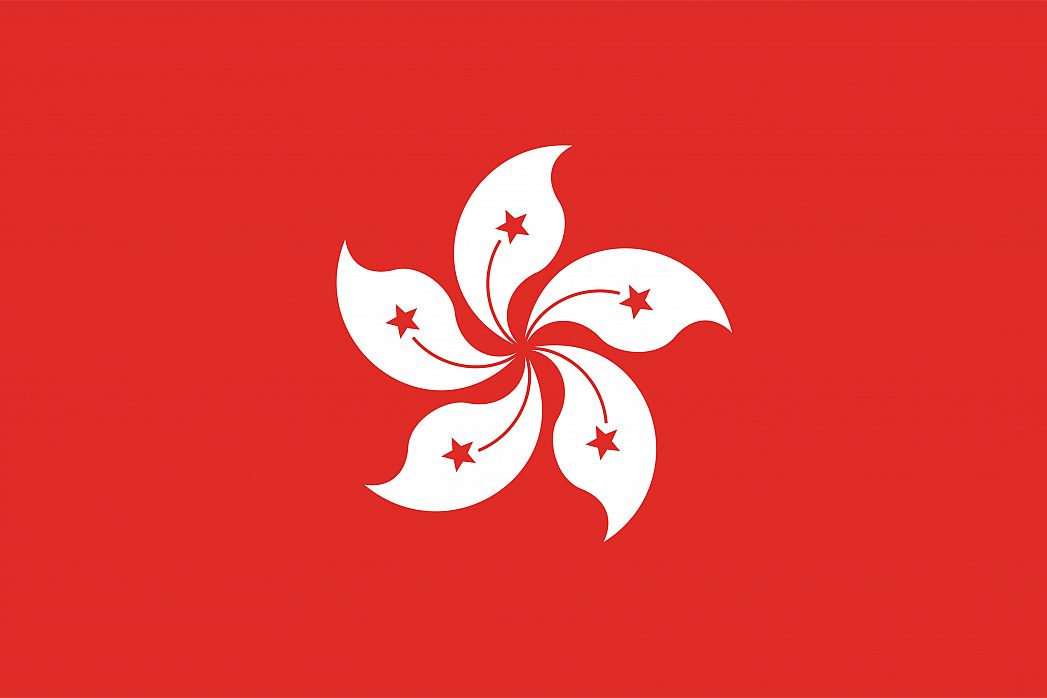The flag of Hong Kong consists of a red field with a white, five-petal Hong Kong orchid tree flower in the center. The flag was officially adopted on 1 July 1997 during a ceremony which handed sovereignty of the island from the United Kingdom to China after 150 plus years of British administration. The use of the flag is regulated by laws that were passed during the 58th executive meeting of the State Council which was held in Beijing.
Red is a traditional colour of Chinese nationalism as well as celebration and festivity. The Hong Kong orchid tree is known as Bauhinia blakeana and although it is grown in many places across the world, it originated in the Hong Kong in 1880; there is even a statue of the plant in Golden Bauhinia Square in Hong Kong. Although flowers from the orchid are pink/purple in color, they are depicted in white on the flag, presumably to make it stand out. The five leaves of the flower are representative of the agricultural peasants, capitalists, proletarian workers, and petty bourgeoisie classes within Chinese society.
This design was officially adopted on 4 April 1990 during a session of the National People's Congress but was not flown until July of 1997. The parameters of the design are also preserved in the Basic Law of Hong Kong as well as constitutional documentation. The Regional Flag and Regional Emblem Ordinance clearly states the correct use, probationary use, desecration, and manufacture laws surrounding the flag.
Previous flags of Hong Kong include the flag flown from 1959-1997 which resembles other British colonial flags. The Union Jack is positioned in the top-left corner of a blue field with the Coat of Arms of Hong Kong on the right-hand side. This flag resurfaced in Hong Kong as a symbol of protest during the early 2010s. While under Japanese occupation from 1941-1945, the flag of Japan was flown in Hong Kong.
This page was last modified on May 1st, 2018
More on Graphicmaps

Published on 2019-11-06
What is a Trade Embargo?

Published on 2019-11-04
Which Two Countries Used to Have the Same Flag?

Published on 2019-09-16
What Is the Only Two-Sided State Flag?

Published on 2019-09-16
Which Country Flag Looks Like the Texas Flag?

Published on 2019-08-29
Flags That Resemble the US Flag

Published on 2019-08-20
